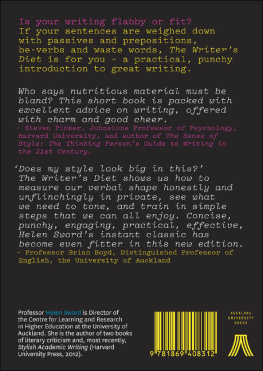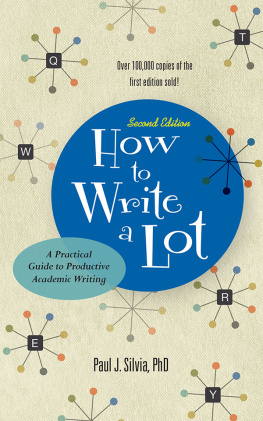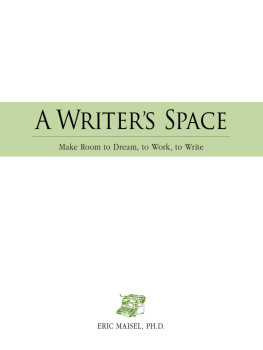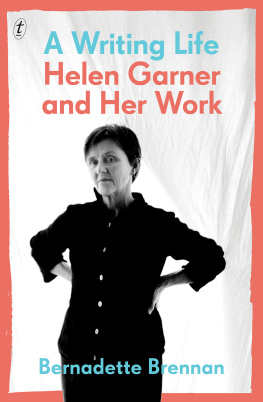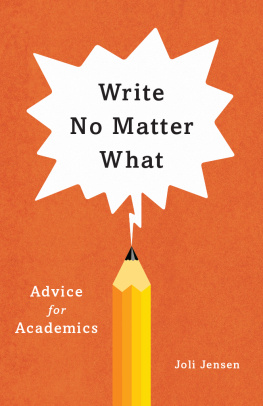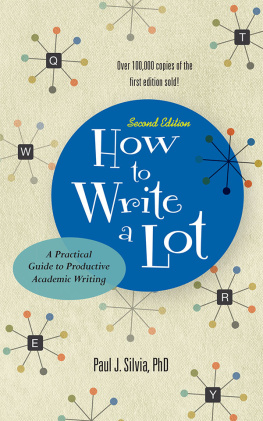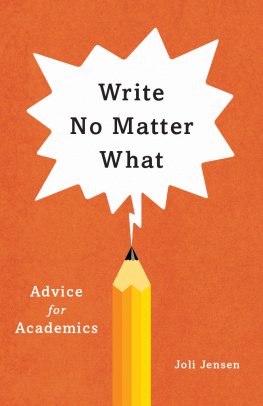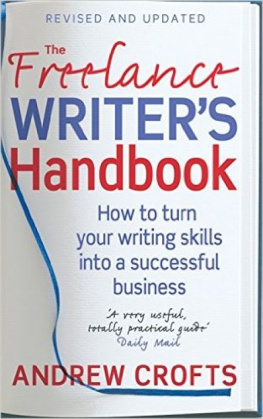Air & Light & Time & Space
HOW SUCCESSFUL ACADEMICS WRITE
Helen Sword


Cambridge, Massachusetts | London, England
2017
Copyright 2017 by Helen Sword
All rights reserved
Book epigraph: Lu Chi, Wen Chu: The Art of Writing, trans. Sam Hamill
(Minneapolis, MN: Milkweed, 2000), 13.
Jacket image: Cumulus clouds look like smoke from an explosion at sunset (photo)/George Grail/National Geographic Creative/Bridgeman Images
Jacket design: Jill Breitbarth
978-0-674-73770-9 (alk. paper)
978-0-674-97763-1 (EPUB)
978-0-674-97762-4 (MOBI)
978-0-674-97761-7 (PDF)
The Library of Congress has cataloged the printed edition as follows:
Names: Sword, Helen, author.
Title: Air & light & time & space : how successful academics write / Helen Sword.
Other titles: Air and light and time and space : how successful academics write
Description: Cambridge, Massachusetts : Harvard University Press, 2017. | Includes bibliographical references and index.
Identifiers: LCCN 2016041937
Subjects: LCSH: Academic writing. | College teachers as authors.
Classification: LCC P301.5.A27 S94 2017 | DDC 808.042dc23
LC record available at https://lccn.loc.gov/2016041937
The pleasure a writer knows
is the pleasure of sages.
Out of non-being, being is born;
out of silence,
a writer produces a song.
In one yard of silk, there is infinite space;
language is a deluge
from one small corner of the heart.
Lu Chi, Wen Chu: The Art of Writing, third century AD
Contents
In a poem titled Air and Light and Time and Space, poet Charles Bukowski addresses writers and artists who fantasize about moving into a studio where they will finally have a place and a time to / create: a large, beautiful room flooded with light. No baby, Bukowski tells them, if youre going to create / youre going to create, even if you work sixteen hours per day in a coal mine, even with a cat crawling up your / back, even while the city around you trembles in earthquake, bombardment, / flood and fire:
baby, air and light and time and space
have nothing to do with it
and dont create anything
except maybe a longer life to find
new excuses
for.
Bukowskis portrait of the suffering-yet-productive artist hits home for many academics. The circumstances that sap our strength and hobble our writingheavy teaching loads, tedious administrative duties, judgmental reviewers, looming deadlinesare admittedly less arduous than mining for coal and less devastating than flood or fire. But even if we dont literally have to write with a cat crawling up our back, we often feel as though we do. We long for air and light and time and space, an architecture of possibilities and pleasure; instead, we find ourselves crushed under the weight of expectations and the rubble of our fractured workdays. And as the walls close in around us, we hear the voices of our department chairs, supervisors, and that annoyingly hyperproductive colleague down the hall: stop whining; just get on with it; if you wait for the perfect conditions to write, youll never publish a single word.
Are academic writers doomed to a life of misery, slaving away by day in the educational equivalent of a coal mine and tapping out our manuscripts by night in the dim glow of a computer screen? What if we were to bring air and light and time and space back into the picture, reimagining ourselves not as suffering artists but as artisans of language: skilled craftspeople who trade in the written word and draw delight and satisfaction from our craft? Like the nation of Bhutan, which measures not only the gross domestic product of its citizens but also their gross national happiness, perhaps we can learn to recognize productivity and pleasure as commodities that supplement and enhance each others valueor, to return to Bukowskis architectural metaphor, as complementary features of the same building.
This book offers no ready-made blueprint for academic success, no skeleton key to a House of Writing where productive writing habits are quick to achieve and easy to maintain. Instead, you will find here a flexible, customizable building plan intended to help you design your own writing practice from the ground up, with words like productivity.
Whatever your route and your pace, I invite you to wander through this book in a spirit of optimism and curiosity, embracing the premise that creativity and craft thrive best in places where the windows are large, the ceilings are high, the outlook is bright, and oxygen and ideas flow freely. For writers in search of that sweet spot where productivity and pleasure meet, air and light and time and space have everything to do with it.
When I first set out to write a book about the writing habits of successful academics, I had no real idea what I would findor even what I was trying to find out. I had already published two books on academic writing: one outlining the key principles of fit and trim prose (The Writers Diet), the other asserting that stylish academic writing is not an oxymoron power dynamics (Id like to write in a more personal voice, but my PhD supervisor wont let me) or emotion (I love to write poetry and stories, but I find academic writing to be unpleasant and stressful). Gradually, my scholarly gaze began to lift from the words on the page to the people who put them there, and I realized that my next book would have to focus not on writing but on writers.
Over the next four years, I conducted in-depth, on-the-record interviews with one hundred exemplary academic writers and editors from across the disciplines and around the worldwith exemplary writ large to encompass a wide range of criteria beyond conventional markers of academic success. Alongside scholarly superstars with distinguished career tracks and prolific publication rates, I sought out other kinds of exemplars: for example, lesser-known academics from underrepresented cultural, ethnic, and gender minorities who have survived and even thrived in academe; scholars who have followed nontraditional paths into and through their disciplines; successful international researchers for whom English is not their first language; pathbreaking thinkers whose writing has taken the scholarship of their field in new directions; academic risk takers who have subverted or challenged disciplinary conventions; effective communicators who have engaged with audiences beyond academe; inspiring teachers and generous mentors who have devoted time and energy to helping their colleagues and students become better writers; and early- to midcareer faculty who contentedly balance their work and family commitments, without the agony, angst, and uncertainty that characterize the writing lives of so many of their peers. (If thats not academic success, what is?) Along the way, I also collected anonymous questionnaire data from 1,223 faculty members, PhD students, postdoctoral researchers, and independent scholars who attended my writing workshops at more than fifty universities and scholarly conferences in fifteen countries. Although they are not the main players in the book, their voices provide the chorus.
At first, I expected that the interviews and questionnaires would provide me with robust comparative data about two clearly demarcated sets of informants: successful writers (the handpicked interview subjects) and struggling writers (the faculty and graduate students who signed up for my workshops on how to become a more productive writer). Before long, however, I came to recognize the folly of my assumption. Not only did the two cohorts overlap significantly, but pitting successful writers against struggling writers turned out to be a false opposition. Many of the academics I interviewed, including tenured faculty members who had been recommended to me by their own discipline-based peers, responded to my initial approach by protesting, I dont know why you would want to talk to me; Im not a particularly prolific writer or Im not a very stylish writer, if thats what youre looking for or To be honest, I really struggle with my writing. Conversely, just about every person who attended one of my writing workshops and filled out my data questionnaire could be labeled exemplary according to at least one of my interview criteria. Indeed, I hope that all readers of this book will recognize themselves somewhere in my commodious definitions of


